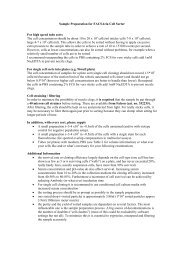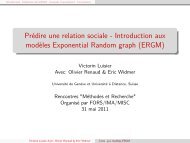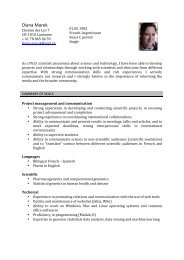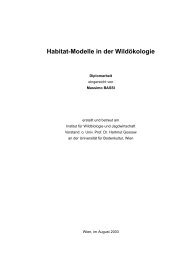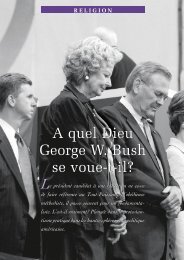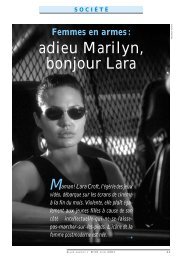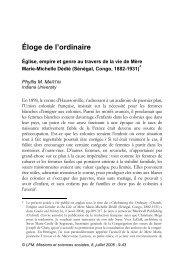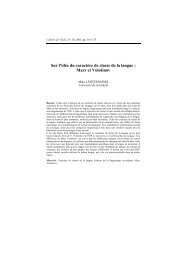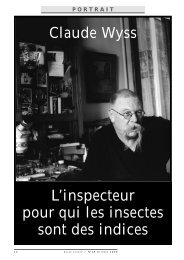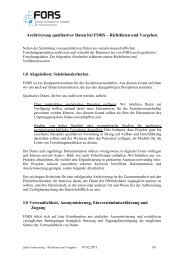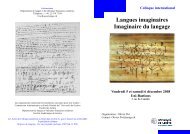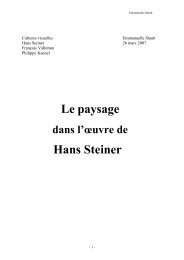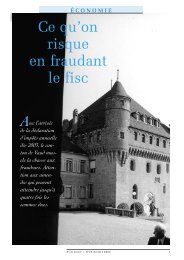conference programme book - European Survey Research ...
conference programme book - European Survey Research ...
conference programme book - European Survey Research ...
Create successful ePaper yourself
Turn your PDF publications into a flip-book with our unique Google optimized e-Paper software.
156 THURSDAY 21 JULYAs a key result, the agree-disagree format performs beer (in terms of fit and the unit of measurement) thanthe disagree-agree variant. Since a difference in the unit of measurement (a mulplicave bias) may lead tospurious mean differences, extreme cauon has to be exercised when data sets based on different modes ofcollecon or different response scales are merged...3.36.2 Explaining more variance with visual analogue scales: A Web experimentF. Funke 11 , GermanyScope: This study focuses on measurement error, one component of error of observaon in the frameworkof the total survey error (Groves et al., 2009). More precisely, this research is about is formang error thatoccurs if a rang scale does not provide a perfectly matching response opon (see Schwarz& Oyserman, 2001). Therefore data collected with two different closed-ended rang scales - convenonal 5-point scales and graphical visual analogue scales (VASs) - were checked against each other. About VASs: Thegeneral advantages of VASs are (1) great sensivity because of a great range, (2) data are less affected by error,leading to more stascal power (see Funke, 2010), and (3) there are far more possibilies for data analysis(e.g., recoding into odd and even number of categories, as well as into any empirical quanle)...3.36.3 How easy is a text that is not difficult? Comparing answers to posive, negave, and bipolar ques-ons.N. Kamoen 2 , B. Holleman 2 , H. van den Bergh 11 University of Amsterdam, Netherlands; 2 University of Utrecht, NetherlandsRespondents give different answers to posive (X is good. Agree-Disagree), negave (X is bad. Agree-Disagree)and bipolar quesons (X is bad-good). This makes survey answers hard to interpret, especially since conflicngresults are reported on how the answers are affected. The current study focuses on the generalizability of suchresponse effects. In twelve studies (each N=about 200) the effect of the same thirteen contrasve word pairswas examined. In each study, three survey versions were constructed: quesons worded posively in the oneversion, were negavely worded in the other and on a bipolar scale in the third.3.37 What is meant by mode effect on measurement? ITo be held on July 21, 2011 from: 16:00 to 17:30, in room 319.Coordinated by:• Steven Hope - Naonal Centre for Social <strong>Research</strong> - NatCen, United Kingdom• Gerry Nicolaas - Naonal Centre for Social <strong>Research</strong> - NatCen, United Kingdom3.37.1 Causes of Mode Effects on <strong>Survey</strong> MeasurementA. Jäckle 2 , P. Lynn 2 , P. Campanelli 1 , G. Nicolaas 3 , S. Hope 3 , A. Nandi 21 The <strong>Survey</strong> Coach, United Kingdom; 2 University of Essex, United Kingdom; 3 Naonal Centre for Social <strong>Research</strong>- NatCen, United KingdomThere are hundreds of studies which experimentally compare the effects of different modes of data colleconon measurement. Some consistent findings and theories have emerged from these studies, notably regardingthe measurement of sensive atudes and behaviours. Whether or not respondents will answer a parcularsurvey queson differently in one mode than in another is, nonetheless, sll mostly unpredictable. This is inpart because many experimental tests focus on descripve comparisons of response distribuons and do notaempt to idenfy generalisable features of the queson or the modes that might cause the differences inmeasurement.



